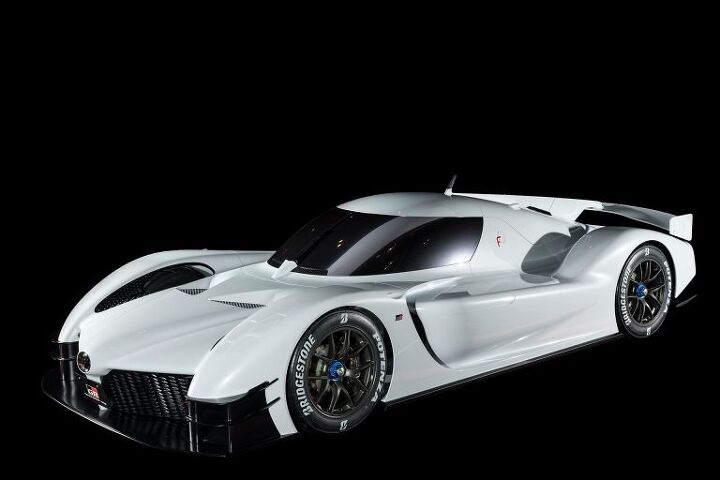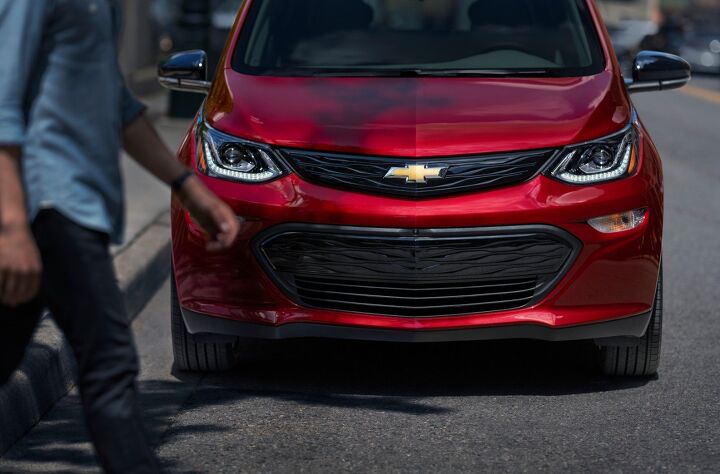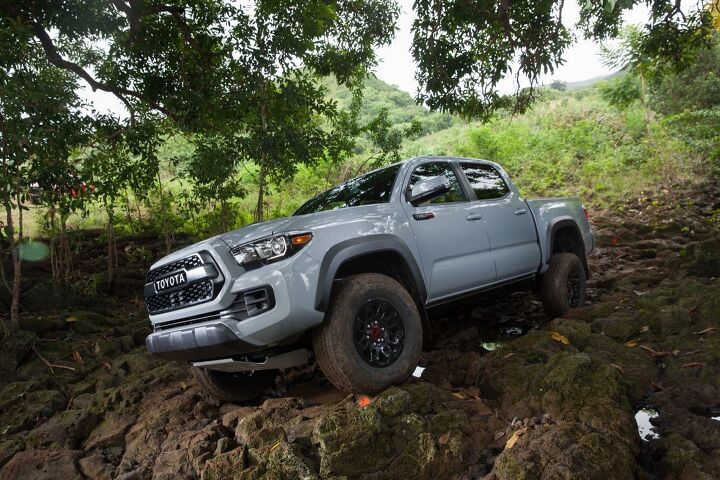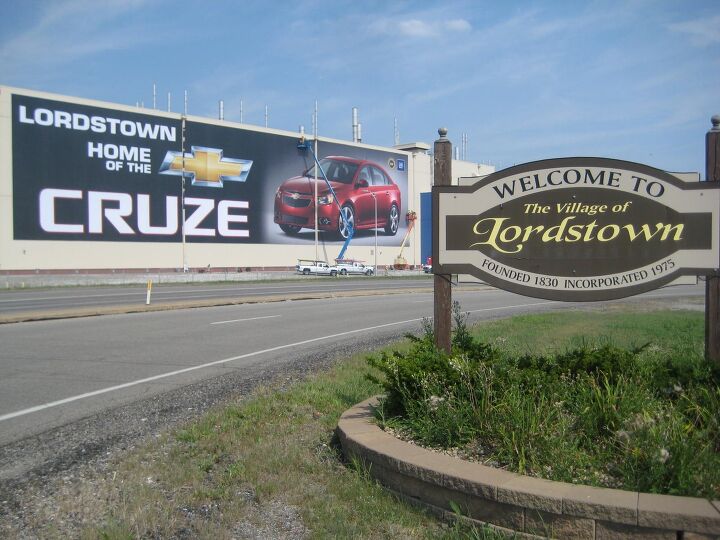#ProductionPlans
Detroit Wrapping on Ventilator Production, Returning to Cars
General Motors and Ford Motor Company are about to conclude their prolonged stint of ventilator production. In case you were unaware, these businesses typically manufacturer automobiles (cars, for the layperson) and have allocated a portion of their factory space to build medical equipment that was assumed to be useful during the pandemic. However, the United States now has more ventilators than it knows what to do with, and most of them seem like they won’t be required — so it’s mission accomplished, unless COVID-19 suddenly becomes a much more vicious illness.
Either way, GM and Ford both plan to re-prioritize vehicle production. The Blue Oval moved core staff off ventilator lines and back to their normal places of assembly months ago. Some of the remaining temporary workers hired to assist with the medical equipment are said to have an opportunity building the new Ford Bronco. Meanwhile, GM says it wants to move ventilator production to a facility in Kokomo, Indiana, next month, where it will hand operations over to Ventec Life Systems as it regains the union employs allocated for the project. Temporary hires will be absorbed by Ventec.
Rumor Mill: Toyota to Build Street-legal GR Super Sport Hypercar?
Previewed way back at the 2018 Tokyo Auto Salon, Toyota’s (Gazoo Racing) GR Super Sport Concept now serves as the template for its next entry into 24 Hour of Le Mans, tapped for the new Hypercar Class that’s effectively replacing FIA’s World Endurance Championship LMP1. The new classification is supposed to reinvigorate the sport by mandating homologation of the wildest inductees, a practice which often leads to the most stunning performance machines ever to grace the road.
That means Toyota has to build at least 20 examples of something street legal that shares more than a handful of components with its LM racer. Rumor has it, something is already in development — and should exist well beyond the confines of what one normally thinks of when they envision Toyota products.
Why Is Everyone So Surprised Detroit Isn't Prioritizing EVs?
News arose yesterday that General Motors’ and Ford Motor Company’s battle plans rely heavily on SUV and pickup sales, rather than electric vehicles. Details of the corporate strategies, first shared by Reuters, soon circulated through the media, with many outlets upset that the pair seem to have oversold the role electrification will play in their respective lineups through 2026. One wonders how they could possibly be this surprised.
Using data issued to parts suppliers from the two automakers, AutoForecast Solutions predicted North American production of SUV models from GM and Ford will outpace the assembly of traditional cars by more than eight to one in 2026. Roughly 93 percent of those models are expected to be dependent upon gasoline. Meanwhile, Reuters compared the manufacturers’ strategy against Tesla — a company that only exists for the explicit purpose of selling EVs and has never assembled a gas-powered automobile — as if all manufacturers are equal in scope and cater to the same type of customers.
Old Kentucky Home: GM Confirms C8 Corvette Production Site, New Emblem
General Motors has officially announced that the Chevrolet Corvette will continue production in Bowling Green, KY after it transitions into a mid-engined car. The automaker will add 400 new jobs and a second shift to support production of the new model, bringing the factory’s workforce to more than 1,300 individuals.
However, the Corvette news — such as it is — doesn’t end there. The vehicle’s factory-sanctioned Facebook page also revealed the car’s new logo on Friday.
BMW Z4 Production Confirmed in Austria by End of Year, Toyota Supra Details Still MIA
While rumors that BMW’s upcoming Z4 roadster would begin production at Magna Steyr’s facility in Graz, Austria, for months, it wasn’t until late last week that the company was actually willing to confirm them. Unfortunately, the manufacturer hasn’t been willing to do the same with the Z4’s sibling car — the Toyota Supra.
Considering that the pair share a common platform and development team, it would make a lot of sense to see them occupying the same factory. But Toyota has remained incredibly tight lipped on the car, only offering us a singular taste by way of the Gazoo Racing concept from the Geneva Motor Show. Meanwhile, BMW has been parading the Z4 around endlessly and even went so far as to show productions test mules lightly camouflaged in self-released “spy shots.”
General Motors Eyes Carbon Fiber Beds for Future Pickups
General Motors, the company that ran a campaign criticizing Ford for moving away from steel on its F-Series, is expected to implement carbon fiber in the beds of large pickup trucks within two years. Hopefully, the wait gives consumers time to forget some rather negative ads that bemoaned the use of aluminum for its high repair costs and chance of deformation in an impact.
Carbon fiber is ridiculously strong and should hold up in any side-by-side impact test against aluminum. That is, until you start considering price. Carbon fiber costs substantially more to manufacture, form, and fix than either steel or aluminum. That’s probably why GM plans to limit its usage to only highest trim levels, at least until it can figure out a way to keep production costs down.
Toyota's Truck Production Plans Largely Dependent on NAFTA Existing
Despite President Trump giving Toyota significant praise for its continued investment in the United States last week, the success of the automaker’s production plans hinge on the continuation of NAFTA — something the Commander in Chief has been vehemently opposed to since his well-before his inauguration.
Toyota and Mazda’s $1.6 billion factory is anticipated to yield 150,000 Corollas annually and free-up assembly facilities in Mexico that would build the Tacoma pickup. However, if the North American Free Trade Agreement is dissolved, anything produced south-of-the-boarder could be subjected to the chicken tax. Were that to happen, Toyota would be placed into quite a predicament and faced with high import taxes on any trucks it had hoped to ship to the U.S.
Next Chevy Cruze Delayed For A Year Due to Engineering Changes and Strong Sales of Current Model
Reuters is reporting that the next iteration of the Chevy Cruze, originally due at the end of 2014, will not go into production until December 2015, as a 2016 model year car.
Don't Bring Me Down: Toyota Raises Worldwide Output
Despite having their hands full with recalls, class action suits, Prius hoaxers and gold diggers, Toyota is not falling into deep depression. To the contrary, they think demand in 2010 will be higher than originally planned. And they ramp up their production to meet the demand.
























Recent Comments